Picasso, Klee, Matisse, and Introducing George Condo at Berggruen Museum
- Christian Hain
- Nov 24, 2016
- 5 min read
Updated: Mar 24, 2020
(Berlin.) No matter how long you live in a city, there is always a museum you have not visited yet. In Berlin, my biggest neglect in this respect was Museum Berggruen. Heinz Berggruen, who was born in Berlin in 1914 and forced to flee to the US in 1936, after the war became a Parisian art dealer and one of the biggest sellers of Picasso editions, before retiring and taking care only of his personal collection. At the end of his life, he sold it with a generous discount to the state of Berlin, where he was buried, after his death, in 2007.
The Berggruen Collection can be regarded as another proof for private collectors doing it better than curating functionaries. Without a doubt, this is the best collection of 20th Century painting in Berlin, a must-visit if you like paintings. Museum Berggruen lies opposite of Scharf-Gerstenberg Collection, you might mistake it for the gatekeeper’s lodge of Charlottenburg Palace around the corner, a place Berliners only ever visit for the annual Christmas market in its front yard. The major downside is getting here. No trains, neither under- nor over-ground, serve the area. If you don’t come on horse- or in limousine-back, you will need to walk. Or take the bus.
Bus drivers belong to a special kind of people everywhere in the world, but maybe even more so in Berlin. Imagine a dark winter night, icy rain falling, and a bus slows down not because of the bus stop about twenty metres behind, but a traffic light ten cars ahead. Out of nowhere, a hand appears, knocks frantically on the front door, a woman outside raises her arms, gesticulates, she’s panting. And imagine the bus driveress shrugging, turning her head and accelerating (the light had switched to green, coincidentally). Then she explodes, shouting at her passengers who, being all too used to Berlin bus drivers’ moods, keep their eyes down, accept the scolding like a famous artist’s studio slave. “Now what? Now you’re running? Just put away your mobile for a second, sitting there! It’s a bus stop not a rest stop!” (hard to translate this from her German, literally: “It’s a stopping point, not a sitting point.”) If never before you’ve taken the bus in Berlin, you might feel the inclination to intervene, there are benches at bus stops after all, and even if nobody wants to get off, a bus driver could, potentially, get the idea, the person “resting” there, on that bench – and even a person holding a mobile phone in her hands - might desire a lift. As it is, you don’t dare to open your mouth, or raise your head, you won’t risk being abandoned in the middle of the road, or worse. Too often you have witnessed the wrath of Berlin bus drivers directed at passengers, pedestrians, other drivers, cyclists - those at least deserve it, and are hardly ever affected, prudently avoiding the road and preferring to chase pedestrians on the pavement - or whoever is unfortunate enough to get in their way. Other times, you wonder why a driver takes this much time at a stop, the bus being full to the last sq.mm, people crammed into each other like platinum cards into an art collector’s wallet, and trusting your watch you are not exactly ahead of the timetable. But the driver savours the moment, stays parked for five, ten, fifteen, minutes, building up emotion in grim silence, before at last a message thunders through the speakers: “If the person in the back would step out of the sensor, we could close the door and move on!” There is no comeback to that. He will push the throttle through the floor to make up on the time lost to that use- and careless scum in the back. The slogan of Berlin Public Transport company BVG, by the way, is “Because we love you”. A very German kind of love. With leather, boots and whips, presumably. Like in all relationships, there are those who arrive in time, and those who will always make you wait. These are only some of the hardships you need to prepare for, when taking the bus to Berggruen Museum.
To make sure I’d avoid all speeches, even if there were none announced, I arrived an hour and a half after the opening had started. There was a large crowd, no catering, and the entry smooth and easy. A Giacometti sculpture in the lobby is a nice warm-up. An arrow pointed downstairs for “wardrobe and lavatory”, so it was straight on first, and upstairs later. I contemplated more Giacomettis, and Picassos, downright impressive, but had they not announced a contemporary American artist, George Condo?
His first work waits behind an air lock, a passageway with doors on both ends: The Great Schizoid has “Condo” written over the canvas, and both “o”’s resemble earth globes. Around this again hang more famous, classic modern, painters. To cut it short: There are many, many, rooms, most of them very small, and most of the works 20th Century master paintings – the Berggruen Collection with Picasso, Braque, Matisse, Cezanne, Klee, once a small Calder. And occasionally a Condo or two sneaked in. It’s not fair. George Condo is an okay painter, sometimes even a great one – Abstract Landscape, 1997, Antipodal Dream, 1996, or Spectral Dancers, 2001 (good buy, Mr Elfman). But he’s not on par. 1980s style pop art just is not the same, and was definitely less ground-breaking, as those masterpieces. Maybe that “schizo” was meant in earnest, and George Condo literally believes, he is all those painters? Probably not.
In New York, everybody wants a condo, but that’s only related to real estate, as many visitors that night could have confirmed. The opening was a society event, visitors looked “collector”, and probably knew Picasso in person. This is not a seriously curated exhibition, it is serious marketing, or: successful networking, from the part of Condo’s Berlin/London/LA/Hong Kong gallery who convinced the museum’s board to host a promotional event. On the one hand, it’s exemplary gallery work. On the other, it means taking huge risks. Heinz Berggruen would have appreciated, he was a brilliant dealer.
A strange film shows hands drawing Picasso-style to the accompaniment of march music, but I missed any clarification as to whose hands that were. Maybe George Condo’s. He can create quite believable Picasso drawings as Berggruen Museum is ready to prove with small formats under glass. They look just like what Picasso did to make a restaurant owner happy, scribbled away on whatever paper was handy. Paintings are a different story, and this is proven in the same room, where a 1936 Dora Maar With Green Fingernails faces a 2013 Study for Multi-Faced Figure. All artist/art student guys paused at Dora, none at the Multi-Faced. For the non-pros it was the same.
I particularly appreciated the participative sound/light installation spread over many rooms; visitors activated it by leaning too close to a wall. On the second floor this background music was suddenly gone, and I wondered if, after all, people are really easy to condition. A quick test reassured me: the alarm was turned off up there.
When you think, you’ve seen it all, feeling exhausted from all the genius, and George Condo, you arrive back at the entrance, and discover a second staircase, leading to more rooms on the same three floors you’ve only just visited. It’s an immense collection. A room on ground floor is dedicated to Heinz Berggruen, you may easily spend another hour in here.
They don’t need show events like this one. George Condo is not even represented by the San Francisco gallery led by one of Berggruen’s sons. His billionaire half-brother Nic, though, is Head of the Board of Berlin’s Berggruen Museum, and a collector in his own right. I would never suspect him being ready to do anything to be on top of a gallery’s waiting list for whatever artist. Or even personally collecting George Condo.
George Condo, Confrontation, 19 November 2016-12 March 2017, Berggruen Museum
World of Arts Magazine – Contemporary Art Criticism
I apologize for the appalling hnioxophobia, and deeply repent of my poor judgements.

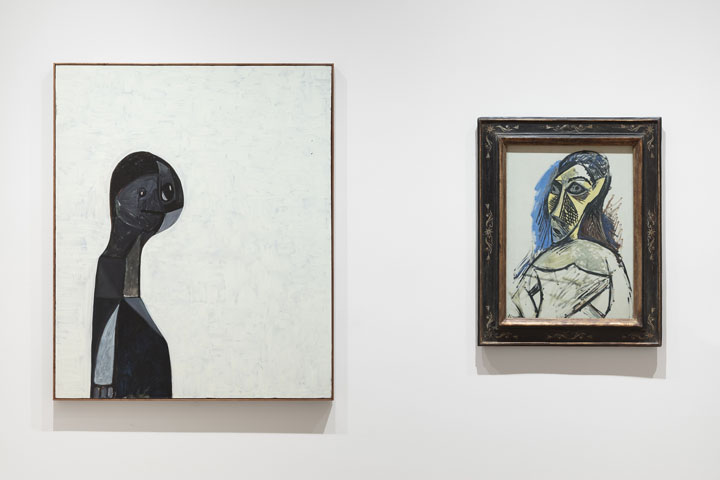

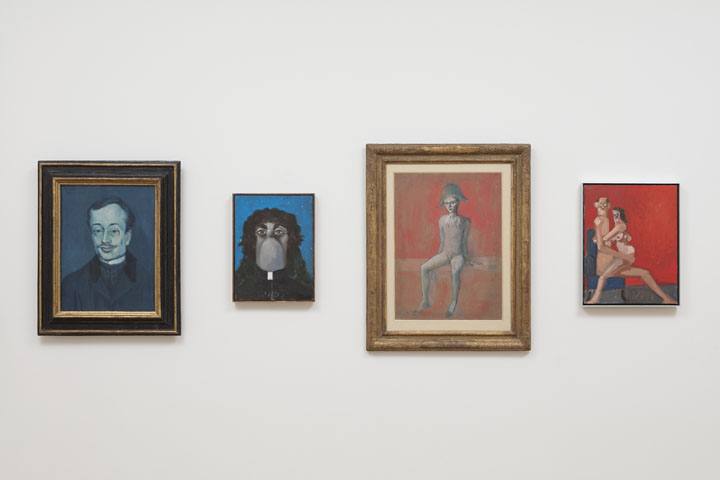

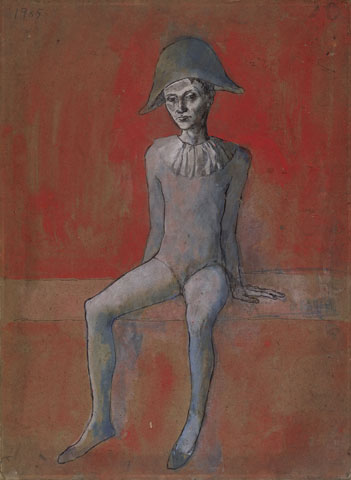

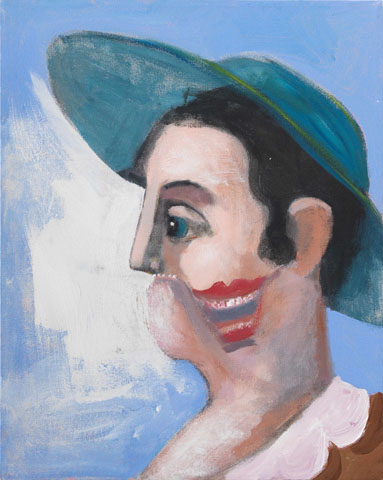

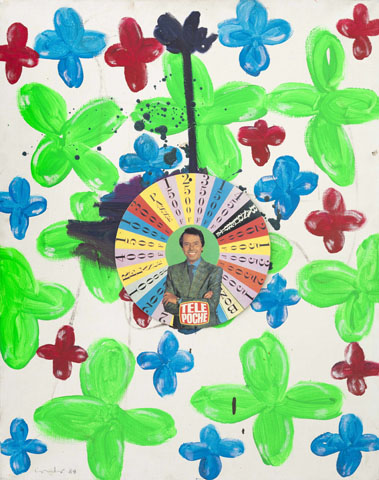
Comments